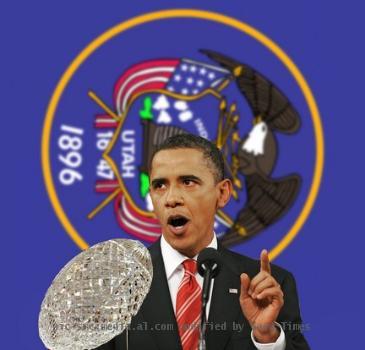Other seas for the fish: Gulf spill creates problems, but buyers look elsewhere
By Michael Hill, APThursday, July 1, 2010
With Gulf spill, seafood buyers swap out supply
GREEN ISLAND, N.Y. — At the Carioto Produce and Seafood warehouse, shrimp from India and Vietnam stock the freezer, while a refrigerated aisle is stacked with bags of clams from Rhode Island, cockles from New Zealand, a fresh 5-pound fillet of lane snapper from Nicaragua and mahi-mahi from Ecuador.
The Gulf may be soiled with oil, but Al Hecker, Carioto’s seafood specialist, has had little trouble getting what he needs in a global market — even for Gulf staples like snapper and mahi-mahi.
“My supply hasn’t diminished, I’ve just stepped sideways,” says Hecker.
Oil gushing into the Gulf has devastated Louisiana’s fishing industry and spiked prices for oysters and some other items, but it has yet to create menu-wide seafood shortages.
That’s largely because about 17 percent of the seafood Americans eat come from domestic sources, and just a bit more than 2 percent of that comes from the Gulf, according to the National Fisheries Institute, a trade group.
“You can duplicate some of those items,” said Rick Groomer, co-owner of Groomer Seafood, a San Antonio-based wholesaler and distributor. “If I don’t buy red snapper out of Louisiana, I can buy it out of Mexico or out of the Caribbean. If I don’t buy grouper, I can buy it elsewhere. If I don’t buy mahi-mahi, I can buy it elsewhere.”
Similarly, crabbers in North Carolina and the Chesapeake Bay have been getting more orders since the spill, said John Sackton, president of Seafood.com news.
Not everything can be swapped out easily, most notably oysters. Though oysters represent a modest share of the overall seafood market compared to big sellers like salmon or tuna, more than 60 percent of oysters eaten by Americans come from the Gulf. Oysters are rarely imported because of the high cost and tough U.S. sanitary regulations.
“Every oyster shipment I get, I cannot tell you where the next one is coming from,” Groomer said.
With supply tight and reports of prices doubling in some cases, Red Lobster recently pulled oysters from its appetizer menu.
Gulf oysters had a dockside value of $60 million in 2008, the latest year for which figures are available, placing them close in value to Gulf crab, which bought in $58 million that year, according to the National Oceanic and Atmospheric Administration.
Fish species in the Gulf tend to bring in less: different types of snapper sold for nearly $19 million dockside, grouper $18 million and tuna just over $6 million, according to 2008 NOAA statistics.
Shrimp is worth far more for the Gulf, with a dockside value of nearly $367 million in 2008. Still, Gulf shrimp accounts for only about 7 percent of what is consumed in this country. Much of the U.S. supply comes from Asia, though overseas production was already down when the Gulf spill exacerbated an already tight market.
Buyers say the oil spill has mostly affected the supply of larger shrimp, the sort restaurants serve. Businesses like Groomer in Texas and the Gulf Shrimp Company in Plantsville, Conn., are closely associated with the high-cachet menu item, making it harder to swap it out for an imported item.
Gulf Shrimp Company owner Chad Simoneaux said shrimp prices in general have spiked with the tight supply. He and others in the industry hope production will nudge up a bit when Texas starts its shrimp season July 15.
“As long as Texas has a good season, I do believe we’ll be out of the panic mode,” Simoneaux said.
With about a third of the Gulf closed to fishing and many crews out cleaning the spill, buyers expect to be looking elsewhere for a while. Hecker fears the supply problems in the Gulf might get worse. But the larger concern for many is not about a drop in seafood supply, but a drop in demand.
The fear is that consumers will avoid eating all seafood because of the continued bad news from the Gulf.
The industry and the federal government have employed everyone from President Barack Obama to “Top Chef” judge Tom Colicchio to spread the message that seafood pulled from the Gulf is safe. But they are doing it amid saturation coverage of crude spewing from the seafloor.
Jimmy Galle of Gulfish LP, a small Sausalito, Calif., company that specializes in supplying restaurants with shrimp and other seafood from the Gulf, said that since the spill he has lost just one restaurant out of more than 100 customers.
But there already are anecdotes about buyers being leery of Gulf seafood. A recent poll by Louisiana State University of Gulf area residents found 57 percent of them said they were less likely to buy local seafood because of the spill.
Sackton said it’s too early to tell if seafood sales in general will go down.
“In my mind the impact on the seafood industry is directly related to how long the oil is spewing out,” Sackton said.
Tags: Accidents, Animals, Barack Obama, Environmental Concerns, Food And Drink, Green Island, Louisiana, Marine Animals, New York, North America, Texas, United States

